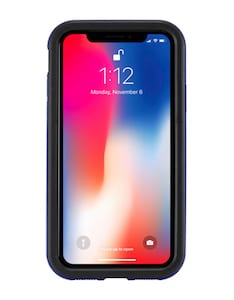 Most people are aware of hot weather being a danger to consumer electronics, but they don’t realize that the colder times of year can be just as difficult to our electronic helpers. To make sure that your devices survive the cold this winter, here are some tips to keep them safe when the weather gets brutally cold.
Most people are aware of hot weather being a danger to consumer electronics, but they don’t realize that the colder times of year can be just as difficult to our electronic helpers. To make sure that your devices survive the cold this winter, here are some tips to keep them safe when the weather gets brutally cold.
Don’t Charge Batteries In Low Temperatures
It may seem like a straightforward reminder, but be sure to bring your devices into a warm room and let them warm up before charging them.
Why? Well, most consumer electronic devices use lithium-ion (Li-ion) batteries and those batteries cannot be charged at subfreezing temperatures (below 32°F or 0°C) without causing damage. Sure, it may look like the cold battery is charging normally, but the battery anode can experience metallic lithium plating. This damage is permanent, and any batteries that are subject to plating can fail when exposed to vibration or other conditions.
This is the solution – don’t charge your electronic devices in a car or unheated garage that is at a temperature below freezing.
Warm Up Your Cold Gadgets
So, you ordered a new MacBook Pro and it was delivered today…and sat in its box on your porch for hours until you got home from work. It’s been below freezing all day. Can you just bring it into the house, unpackage it, plug it in and get to work? We’d recommend that you be patient and let the computer warm up to room temperature first. This is not just for laptops, but any consumer electronics.
Although they’re becoming less common as the default drive in our new devices, Hard Drives (see image below) really have problems with cold temperatures. There are lubricants that keep the platters spinning freely at high speeds, and those lubricants can thicken when they’re cold. The platters may not be able to spin at their design speed when cold, so your device may not boot properly or data written to the drive when cold may be unreadable when it’s warmed up later.
 Solid State Drives (SSDs) are less susceptible to cold temperatures as they have no moving parts, but manufacturers recommend that they be operated only after being warmed to a temperature of 32°F (0°C) or above.
Solid State Drives (SSDs) are less susceptible to cold temperatures as they have no moving parts, but manufacturers recommend that they be operated only after being warmed to a temperature of 32°F (0°C) or above.
Finally, there’s one other killer for cold electronics in areas with high humidity. When devices that have been exposed to cold temperatures are brought into a warm, humid place, they can be covered with condensation as the moist air hits the cold surfaces. This happens with electronics as well — for example, bring a device into a warm and humid location when it’s been sitting in cold weather and the condensation can be bad enough to cause electrical shorts on circuitry. This isn’t as much of a problem as it used to be now that many of our devices are sealed, but it can be particularly hard on older Macs with motherboards that are exposed to the air (the Mac mini and Mac Pro in particular).
Let those electronics warm up! If you’ve ordered a new hard drive from OWC and it has been sitting outside in a box in subfreezing temperatures for a while, let it warm up before installing it. Laptops should also be given some time to warm up after a prolonged cold soak before turning them on.
How Cold Is TOO Cold?
The best way to find out if a device can be used or stored in cold temperatures is to check the manufacturer’s specifications. Most specs include maximum and minimum temperatures for use and for storage, so keep those temperatures in mind.
The 2017 MacBook Pro with Touch Bar has these temperatures listed under “Tech Specs” for the laptop on Apple’s website:
- Operating temperature: 50° to 95° F (10° to 35° C)
- Storage temperature: –13° to 113° F (–25° to 45° C)
How about that new iPhone XS that’s sitting in your pants pocket while you wait for a train in cold weather? While it can operate in a slightly wider temperature range than the MacBook Pro, it has a slightly less forgiving storage (nonoperating) temperature range:
- Operating ambient temperature: 32° to 95° F (0° to 35° C)
- Nonoperating temperature: −4° to 113° F (−20° to 45° C)
For any Apple device listed on the Apple site, just tap on “Tech Specs” to get the word on how cold (or hot) it can be before that gizmo may decide not to work.
Beware of Wind Chill
One reader of the Rocket Yard reported earlier this year that “Outdoor enthusiasts need be aware of wind chill factor also. I had an iPod mounted to the handlebars on my motorcycle and froze it to death riding on an extremely cold day. Ice crystals formed and that was it.”
Keep those gadgets in a jacket or pants pocket to keep them warm while you’re riding, hiking, skiing, ice skating, inner-tubing, sledding, tobogganing, or enjoying any other sort of winter fun…or just stay inside and wait for warmer weather!








It should read “more forgiving” for iPhones. When the range is in a wider range, it is more forgiving.
Nice post. Thanks for sharing it.
Batteries and the things they run, like the cold! some people used to even keep batteries in their freezer to “keep them fresh” so to speak.
Absolutely not true. A simple search will resolve that misinformation
Right, Cheyne. No battery “likes cold” and no one has ever kept batteries in the freezer unless they were trying to ruin them. That post should be deleted as it is completely wrong … as you mentioned.
True story. But we always kept our batteries in the fridge (not the freezer) to extend their life. It worked! Don’t know what the others are complaining about.
yep, my military unit still keeps batteries in the fridge (not freezer) to extend their life
Note, that inanimate objects are not subject to windchill as are people or animals. Generally, the presence wind only accelerates the loss of temperature until the object reaches the ambient temperature.